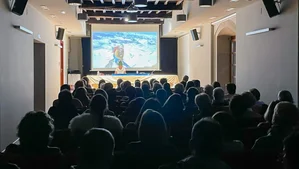Historic Plantation in the Canary Islands Marks 11 Years of Revitalization
In a celebration that highlights the rich cultural and historical heritage of the Canary Islands, a historic plantation has marked 11 years since its revitalization, a journey that has transformed it into a vibrant cultural and educational hub.
The Plantation's History
Located on the island of Gran Canaria, this plantation has its roots in the 15th century when the Canary Islands were colonized by the Castilians. The islands, known for their fertile soil and favorable climate, became a major hub for sugarcane production, facilitated by the brutal practice of enslavement of both indigenous Canarians and Africans[1].
Revitalization Efforts
The revitalization of the plantation began in 2012, driven by a local initiative to preserve the historical and cultural significance of the site. Over the past 11 years, extensive restoration work has been undertaken to restore the original structures, including the round stone houses and complex burial sites that date back to the pre-Hispanic era.
Cultural Significance
The plantation is not just a historical site but also a living museum that showcases the indigenous culture of the Guanches, the original inhabitants of the Canary Islands. Archaeological findings have uncovered a rich culture visible through artefacts such as ceramics, human figures, fishing, hunting, and farming tools, as well as cave paintings and Libyco-Berber alphabet inscriptions[1].
Educational Programs
As part of its revitalization, the plantation has been integrated into educational programs aimed at teaching visitors about the history and culture of the Canary Islands. Workshops and guided tours are conducted to highlight the significance of the site, including the harsh conditions faced by enslaved workers who labored in the sugarcane fields.
Community Engagement
The celebration of 11 years of revitalization was marked with community events, including traditional music and dance performances, local food festivals, and exhibitions of historical artefacts. The event drew in both local residents and expats, fostering a sense of community and shared heritage.
Future Plans
Looking ahead, the plantation is set to continue its role as a cultural and educational hub. Plans are underway to expand the site to include more interactive exhibits and to collaborate with local schools to develop curriculum-based programs that focus on the history and culture of the Canary Islands.
The revitalization of this historic plantation is a testament to the enduring legacy of the Canary Islands and serves as a reminder of the complex and often tumultuous history that has shaped this unique and culturally rich region. As the Canary Islands continue to grow and evolve, this plantation stands as a vital link to the past, ensuring that the stories and traditions of the islands are preserved for future generations.
About MovetoSpain.es
MovetoSpain.es is an independent data website that helps people move to, live in, and integrate into Spain. We use AI to gather data from around the web to provide you with the most up-to-date information.
Sources for this story:
Related Stories

Laredo Invited to the Piedra Fest: A Celebration of Tradition and Community
April 19, 2025

Weather and Celebrations: What to Expect During Holy Week in Spain 2025
March 11, 2025

First Screening of "Cinco Caminos" in Cantabria Held at Espolón
March 11, 2025

Vallehermoso Embarks on Ambitious Historic Center Rehabilitation Project
March 10, 2025

Celebrating Father's Day in Style: Exciting Events Across Spain and the Canary Islands
March 9, 2025
EuroMillions Results in Spain for Friday 18th
Friday, April 18th, 2025
Subscribe to Our Newsletter
Stay updated with the latest news and stories from Spain.
